Filopappou Hill, Athens: Your 2024 Visitor’s Guide by a Local
Filopappou Hill in Athens (also known as Philoppapous Hill/Φιλοπάππου) is a green oasis in the heart of the Greek capital. The hill and the park that encompasses it makes a great addition to any trip to Athens, and there are several notable sites and attractions within the complex.
Filopappou Hill, Athens
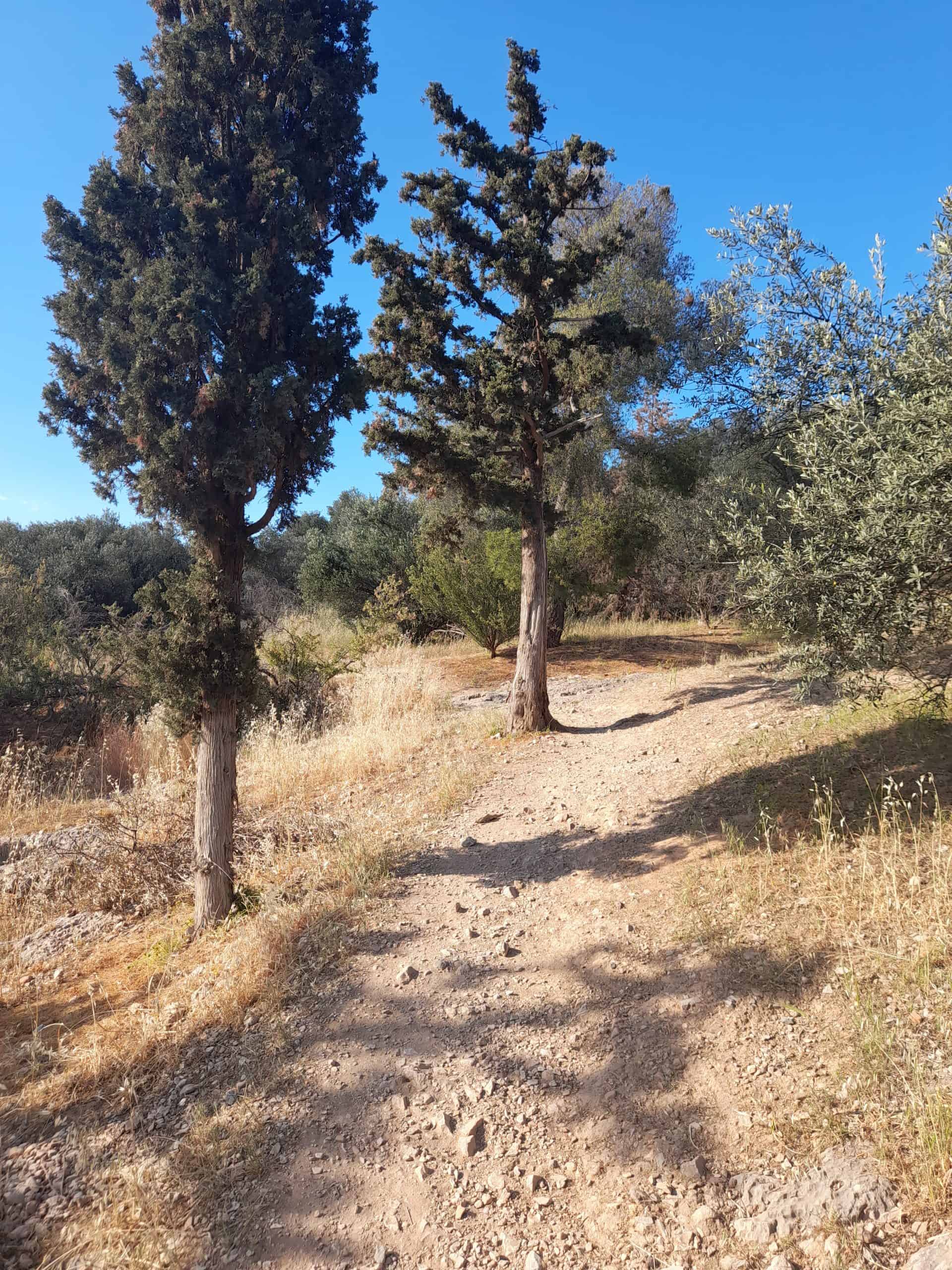
Filopappou Hill is best known for its namesake Philopappous monument. This sunbleached monument, dedicated to the late Roman Emperor Julius Antiochus Filipappous is illuminated at night and is visible across Athens.
But Filopappou Hill is much more than that. The hill is sometimes referred to as being the ¨Hill of the Muses¨.
In the Middle Ages, it was known as Seggio Hill. There are various theories as to how the hill came to be awarded the name ¨The Hill of the Muses.¨
One of the most longstanding is that the hill is named after the late poet Musaeus who may have been buried in the area. Quite possibly, its name also stems from a shrine that once stood in this area.
Today, Filopappou Hill makes a great alternative addition to any Athens itinerary. This is one of seven major hills in Athens and is a popular rendezvous point for locals.
You can easily spend several hours here, following the various woodland trails and seeking out secluded churches and viewpoints where you have unparalleled views of the infamous Acropolis. Some parts of the Filopappou Hill complex are so dense with woodland, pine trees and birdsong that it is easy to forget that you are in the centre of one of Europe’s most chaotic cities.
Notable Sites within the Filopappou Hill Complex
There are several notable sites within the Filopappou Hill complex. Ideally, you should have 2-3 hours to dedicate to the park.
The main entrance is found on the charming cobbled boulevard of Apostolou Pavlou between Thissio and upscale Makrygianni.
There is an uphill marble pathway that weaves through the site leading you to the peak and the Philopappos Monument. This path was constructed by architect Dimitris Pikionis in the 1950s.
The route isn’t particularly difficult or steep. It is well-paved and easy to follow for walkers of all ages and fitness levels.
Several routes veer off from the main pathway and are well worth exploring. They reveal a number of interesting attractions, including Socrates’ prison, Pnyx, and the quaint wooden church of Agios Dimitrios Loumbardiaris.
Socrates Prison
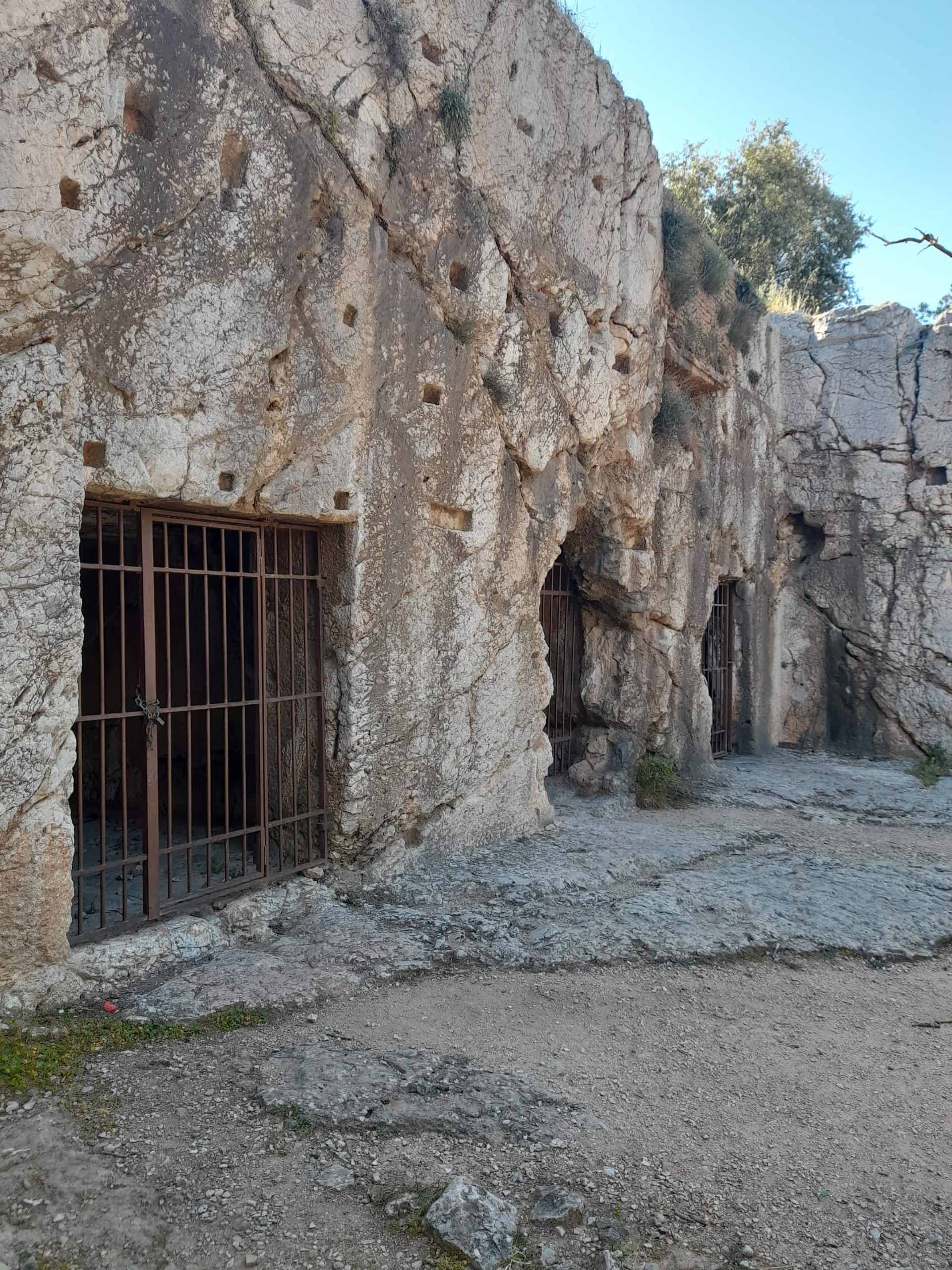
Socrates Prison is a carved cave complex in the foothills of Filopappou Hill Athens. For a period, it was believed that it was here where the Ancient Greek Philosopher Socrates was tortured and ultimately killed.
It was later discovered that this was not the case at all. However, the cave has still played an interesting role in Greek history.
It was here where the Greeks hid their sculptures and antiques from the Acropolis and the National Archaeological Museum from the Nazis during the German occupation of Greece in World War II. They were hidden from view behind a thick concrete wall to stop German looters from seeing them, and fortunately, they survived the war unscathed.
Nobody is certain of the exact original purpose of the complex, although it seems to have been a residential dwelling at one point. The impressive cave contains several rooms and a staircase, which have all been carefully carved into the bedrock.
The Church of Agios Dimitrios Loumbardiaris
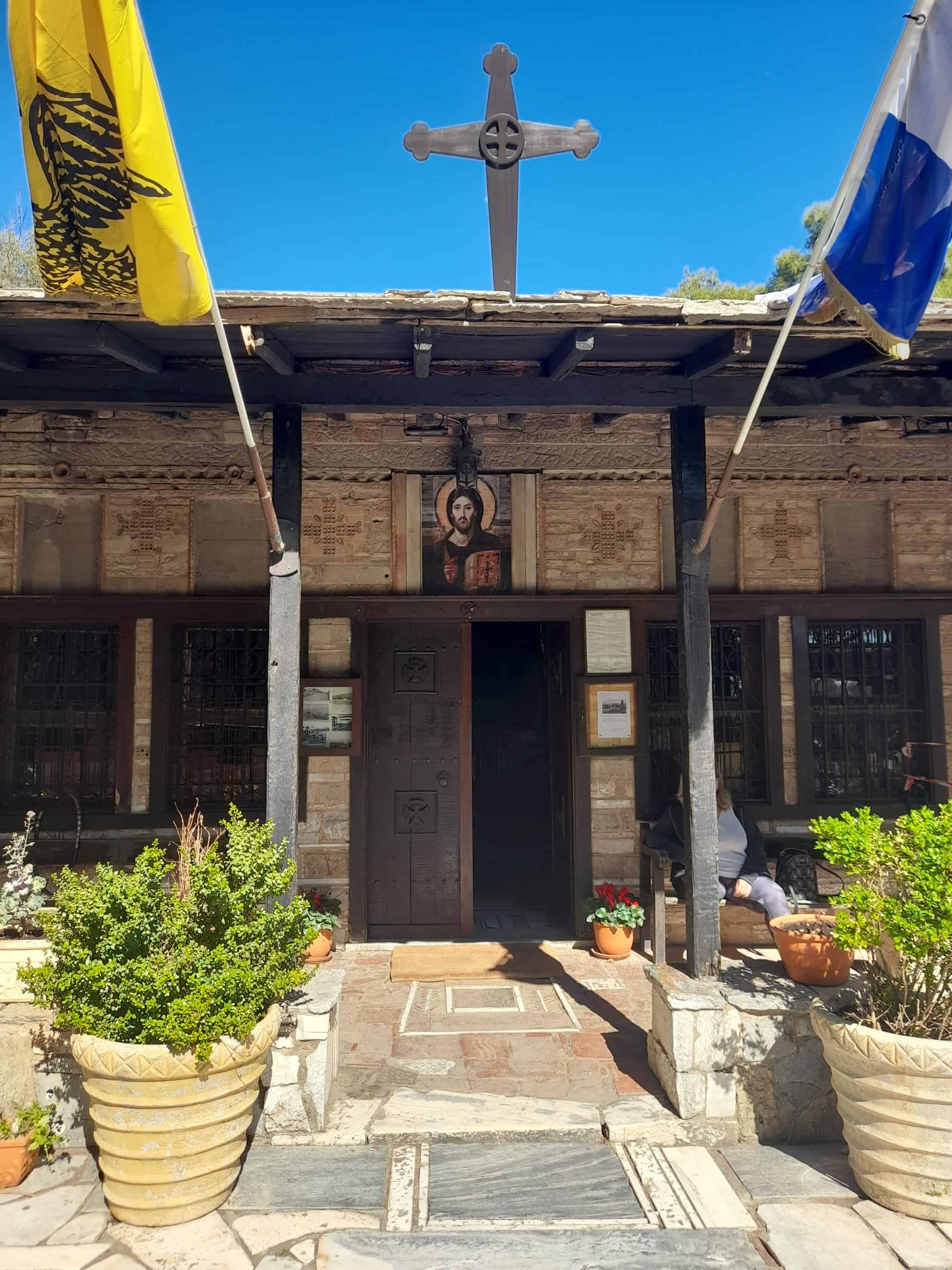
The church of Agios Dimitrios Loumbardiaris (Saint Demetrius the Bombardier) is not one of the oldest churches in Athens, nor one of the most aesthetic. However, it is charming and interesting in appearance.
You will find the serene woodland church on the right-hand side of the main promenade when you enter the Filopappou site. The stone church dates back to the 9th century and boasts a vaulted, aisled basilica.
Like other notable Athenian churches, it was constructed using the remains of churches in the area that were previously destroyed. It had sadly fallen into disrepair over the centuries but was lovingly restored by architect Dimitrios Pikonis in the 1950s.
The exterior courtyard is particularly unique. It feels more like something that you would expect to see in Kyoto than in the Mediterranean.
Agios Dimitrios Loumbardiaris’ courtyard boasts wooden gates and bells hanging from trees. The gorgeous, vibrant frescoes inside the church date back to the 18th century.
One notable image is the 1732 fresco of St Dimitrios riding his horse. The name of the church means “Saint Demetrius the Bombardier” in Greek.
It is named after an event in 1658, when the Aga of Athens, Yusuf, was planning to destroy the house and the worshippers within. However, a thunder fell upon the gunpowder storehouse and killed him and his family and comrades.
Considering this a sign from the gods, Athenians renamed the church after the event. Today, many weddings and baptisms are hosted at the little church.
The Pnyx
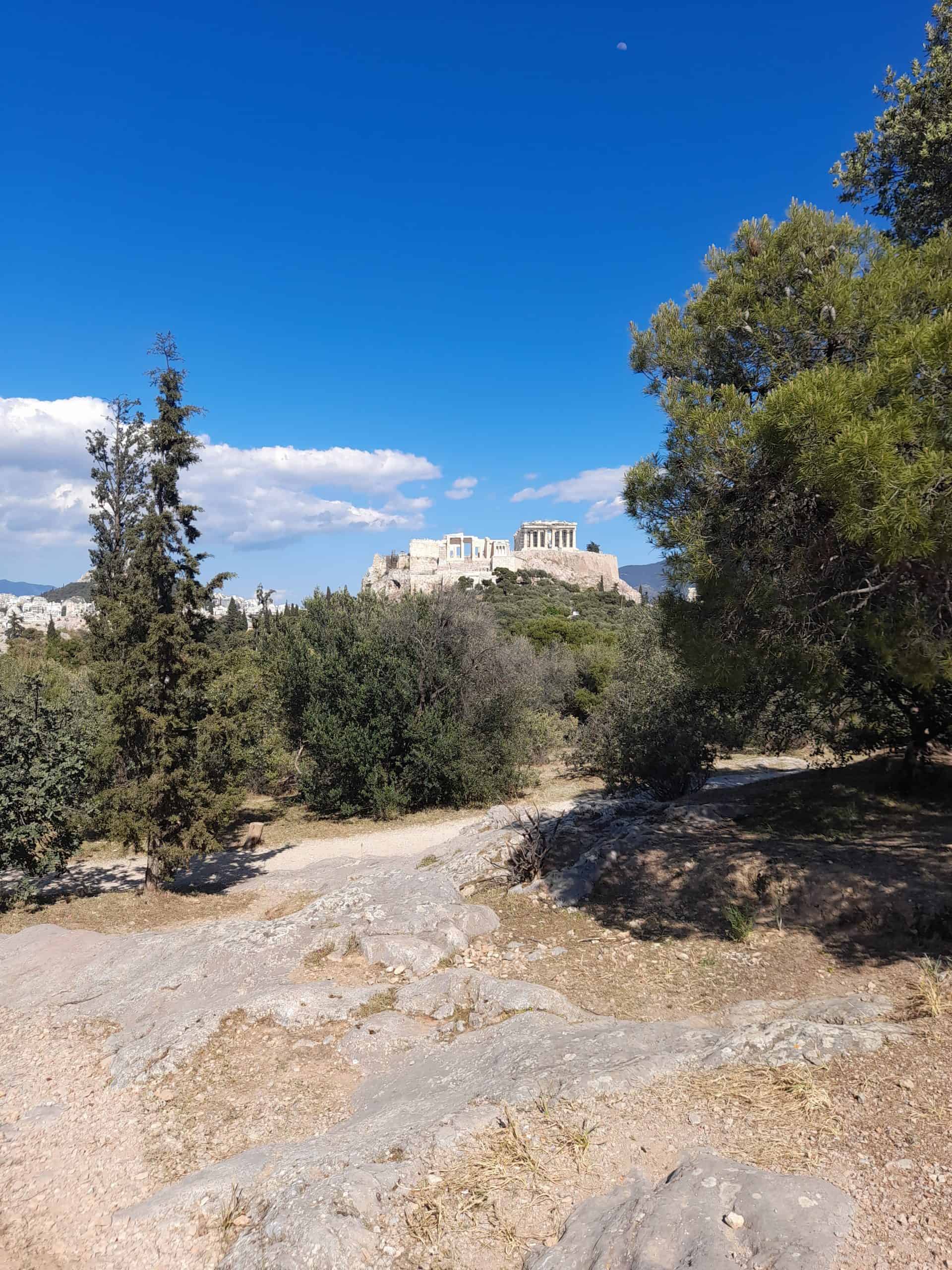
There are actually three Athenian hills set within the Filopappou park area: The hill of Pnyx, the hill of nymphs, and Filopappou hill.
A lesser-known fact about Athens? It is the hill of Pnyx that was the birthplace of democracy.
It was here where the Athenian democratic assembly (ekklesia) would meet, and where famous Ancient Greek orators such as Demosthenes, Perikles, Aeshines, and Themistocles would give speeches. Assemblies gathered here from the 6th to the 4th century BC.
The word ¨Pnyx” means ¨place where people are closely packed together¨. This open-air chamber could hold 10,000 people.
Only a few crumbling walls, the remnants of an old podium, and a few inscribed boundary markers remain here today. The Pnyx was abandoned in the 4th century. At this time, the assemblies were moved to the nearby Theatre of Dionysus.
Today, the rocky hill of the Pnyx is a magnificent place to sit, enjoy the city views, and look out to the Acropolis. Arguably the Acropolis views are better from here than at Filopappou peak.
The Pnyx sits directly opposite Acropolis hill. The Parthenon is so close to here that it almost feels as though you can reach out and touch it.
The Hill of Nymphs

The second of the three hills that make up the Filopappou site is the hill of Nymphs. This small leafy area is only 105 metres in height.
It is essentially a forest of olive and pine trees and is a popular spot for local walkers. The hill is a great place to wander, reflect, and have time alone with your thoughts.
This area is dominated by the National Observatory of Athens which was built by Theophile Hansen and founded in 1842. It was the very first modern research facility in Greece.
The views from the Hill of Nymphs are beautiful, but perhaps not quite as impressive as those enjoyed at the nearby Pnyx hill or Filopappou Hill. If you are interested, it is possible to organise an evening tour at the National Observatory and gaze up at the night sky through a telescope.
Philopappos Monument
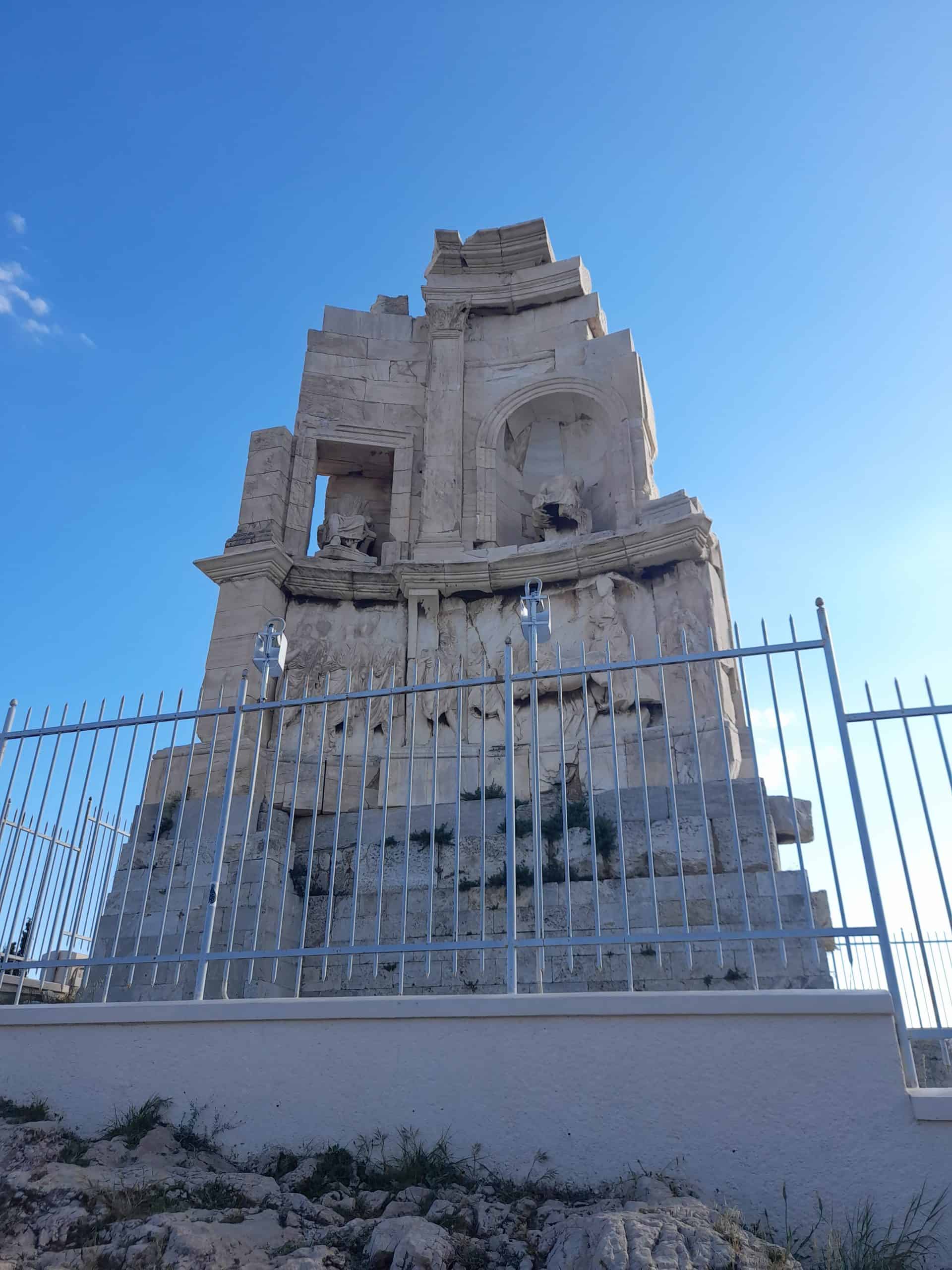
The Philopappos Monument is the impressive carved structure that sits at the top of Filopappou Hill, Athens. It is made of Pentelic marble and can be seen from around the city.
The monument is illuminated at night and provides a magical contribution to the Athens skyline. This is much like its neighbouring Lycabettus hill with its resident whitewashed church, and the nearby Acropolis.
The monument was dedicated to the Roman Commander Julius Antiochus Filopappos. Filopappos was one of the most prominent Greeks to ever exist within the Roman Empire.
His mourning family ordered the construction of the monument in 115 BC. Filopappos himself was buried in a sealed tomb behind the monument.
The top middle niche depicts Filopappos enthroned. Although now sadly he has lost his head. Carvings of his chariot and entourage are depicted below.
Unfortunately, the monument has suffered a lot of vandalism over the centuries. Many of its initial inscriptions no longer remain. It was partially restored by the engineer N. Balanos in 1904.
The main draw of climbing up to the Philopappos Monument is the panoramic views of Athens from this point. On a clear day, you can see all the way out to Piraeus, and the Saronic Islands of Salamina, Hydra, etc.
Theatre of Doras Stratou
The theatre of Doras Stratou can be found in the centre of the Filopappou Hill Athens site, on the slopes of the Hill of Nymphs. The theatre actually acts as a living museum and a unique one at that. It is the living museum of Greek dances.
During the summer months, the 860-seat garden theatre offers traditional performances. Dances are performed to showcase traditions from various regions of Greece – from Epirus to Karpenisi, Evritania.
Deaf Man’s Cave
The ¨Deaf Man’s Cave¨ is an elaborate rock-cut structure that was only recently excavated in 2009. Thus hinting at the exciting promise of potentially more treasures and historical sites lurking beneath the surface of the Filopappou site.
The cave complex is made up of two chambers. It is believed that they were originally used as places of worship, then as homes, and later as tombs and burial monuments. The obscure name ¨deaf man’s cave¨ hints at a local legend that the man who resided in this particular stone-cut house was deaf.
The Church of Agia Sotira
The little church of Agia Sotira sits on the outskirts of the Filopappou Hill Athens site. It is a distinctly unique-looking church that almost doesn’t look like a religious structure at all.
It sits at Lakiou 8, in the shadows of the Philopappos Monument. The little ceramic red-roofed building is not a tourist attraction. But it provides an interesting glimpse into life in Athens. Baptisms and other ceremonies are often hosted here.
Kimon’s Tomb
Kimon’s tomb is a rock-cut structure within the Filopappou Hill complex that is just a short distance away from Socrate’s prison and Deaf Man’s cave. This interesting double tomb has been carved into the bedrock.
An inscription dating back to the 3rd century AD identifies the tomb as belonging to an individual known as ¨Zosimianos¨. The two rooms within the cave complex are of equal size and are divided by a rock parapet.
An alternative theory, perhaps not quite aligning with the inscription, is that the tomb belongs to the Olympic victor Kimon and his relative, the historian Thucydides. A piece by Herodotos, Markellinos and Plutarch states that the two individuals were ¨buried in a rock-cut cave facing the Acropolis¨ which people took as referring to this specific cave.
FAQs about Filopappou Hill Athens
Do you have any additional questions about visiting Filopappou Hill in Athens? Hopefully, you will find the answers you are looking for below.
Is Filoppappou Hill safe?
Filopappou Hill is mostly safe. Athens in general is a very safe city.
Unfortunately, there have been a number of muggings and other petty crimes in the area in recent years after sunset. That doesn’t mean that Athens or Filopappou Hill are not safe. Simply, you need to use common sense and be careful at any isolated park space in any major city.
There are presently no coffee shops or refreshment stands within the Filopappou Hill Athens site. However, there is a small kiosk at the site entrance on Apostolou Pavlou which sells cold beverages and small snacks.
You can explore the entire site in a little over an hour. Pack plenty of water, sunscreen, and a sun hat if you are visiting during the summer months. In some areas, such as Pnyx, there is no shade from the sun.
There are a few entrances to the site – in nearby Koukaki, Petralona, and Thissio. The main entrance is at Apostolou Pavlou.
How long does it take to climb Filopappou Hill?
It takes approximately 15-20 minutes to climb Filopappou Hill. The ascent follows a steady walking trail and you don’t need to be of a certain fitness level to conquer the hike.
Arguably Filopappou Hill takes half the time to climb as nearby Mount Lycabettus.
What is on the hill across from the Acropolis?
Filopappou hill is the Athens hilltop that sits across from the Acropolis. The Filopappou monument dedicated to Roman Emperor Julius Antiochus Filipappous awaits at its peak.
Filopappou Hill admission fees
Filopappou Hill is a public Athenian park. It is free to enter, and there are no admission fees for any of the various churches, structures, or trails within its grounds.
Filopappou Hill Athens opening times
Filopappou Hill is open 24 hours a day, 7 days a week. However, due to an increase in crime in the area in recent years, you should really reconsider visiting after sunset.
Amenities at Filopappou Hill
There is currently no coffee shop or cafe, etc located within Filopappou Hill. However, there are several Greek street food carts along Apostlou Pavlou, as well as a small kiosk at the entrance to the park where you can purchase light snacks and refreshments.
Final thoughts on visiting Filoappou Hill in Athens
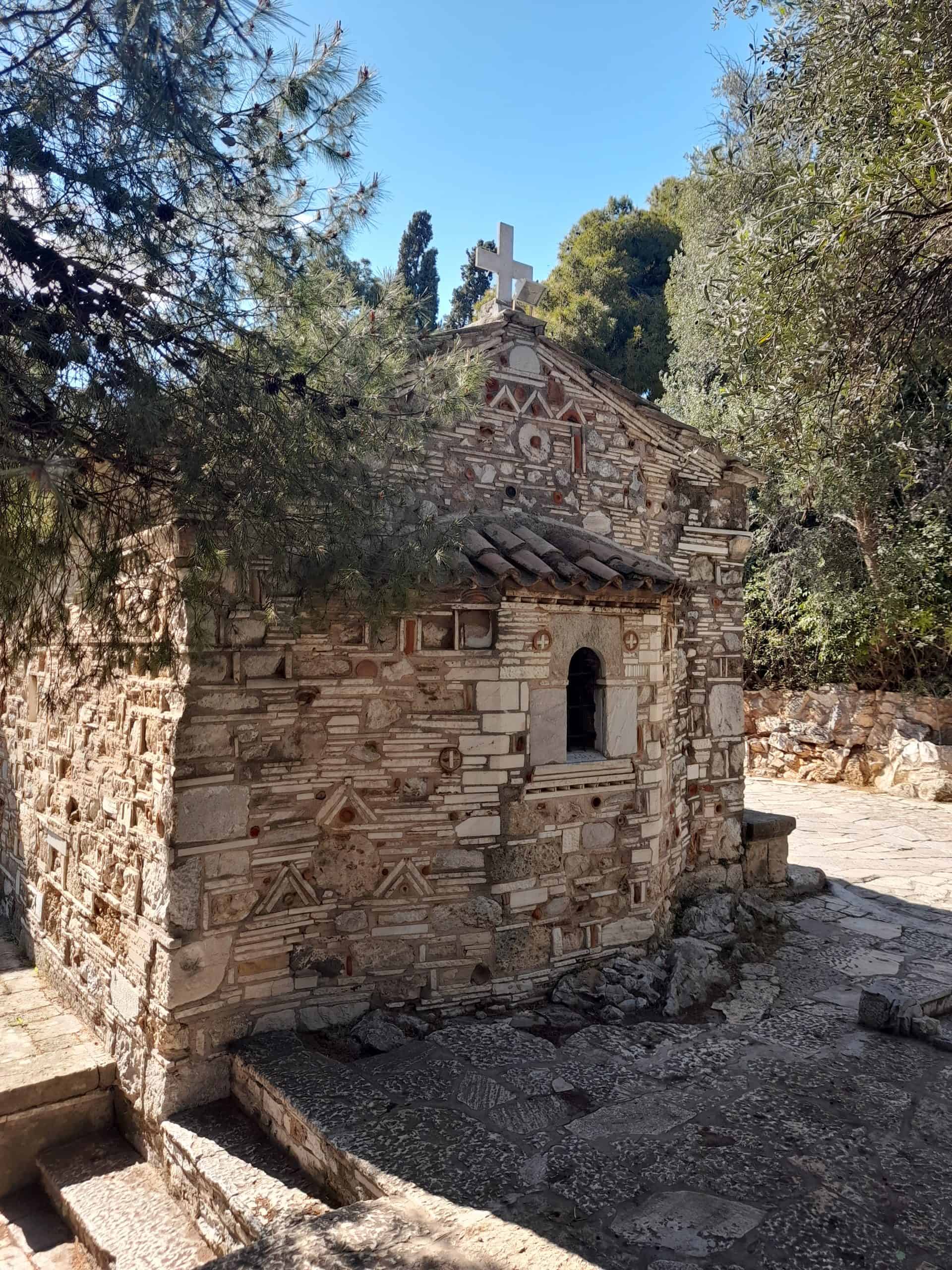
Have any questions about organising your trip to Greece? Please don’t hesitate to reach out to me.
I have been living in Athens since 2017. I am happy to assist with any questions that you may have.
Safe travels! Melissa xo
